
From the balcony of Chapultepec Castle in Mexico City, elements of history, both old and new fill the frame.
Mexico City is rightfully touted as one of the “hot” destinations for world travelers. Just a few reasons include her sheer size, rich history, respect as a food scene, lively arts, urban vibrancy, a genuine cosmopolitan identity and compelling architecture in a city with great weather that is easier to get around than you might think.

The main post office in Mexico City, just across the street from Bellas Artes, contains elegant architectural details.
Recognized as an “alpha” global city, and currently the 19th largest city in the world with a population of just under nine million (the surrounding area more than doubles that number) Mexico City is increasingly viewed as a nexus for business, culture and arts.

A rare traffic lull along Paseo de la Reforma. Mexico City was long referred to as “DF” (dee-effay), but the new moniker is CDMX (Cuidad Mexico).
As just one example, Mexico City has a wide variety of neighborhoods, each with its own sense of self and style. Whether it is the reemerging La Roma considered one of the oldest neighborhoods (barrios) in the city, the Art Deco-rich Condesa, Polanco which is known for shopping and tourism, La Zona Rosa, recognized as Mexico City’s gay-friendly neighborhood, or Del Valle where Jose Lopez Portillo and other famous leaders of early Mexico lived, or any of nearly a dozen other barrios, there is a place for everyone.

A street performer nails the landing as he jumps from barrier to barrier, earning tips from drivers who are stopped at a light.

From Chapultepec Castle, the park’s lake and the barrios indicate what a huge place Mexico City is.
Wherever you go, you feel a pulse of activity in Mexico City, a passion for the things people are doing and a drive to showcase their accomplishments. From trendy shops, artisanal foods, eye-catching art, or maybe because so many people live and work within the city’s 573 square miles, there is a sense of people getting things done. Just taking a drive down the street is an experience of people in a hurry to get somewhere.
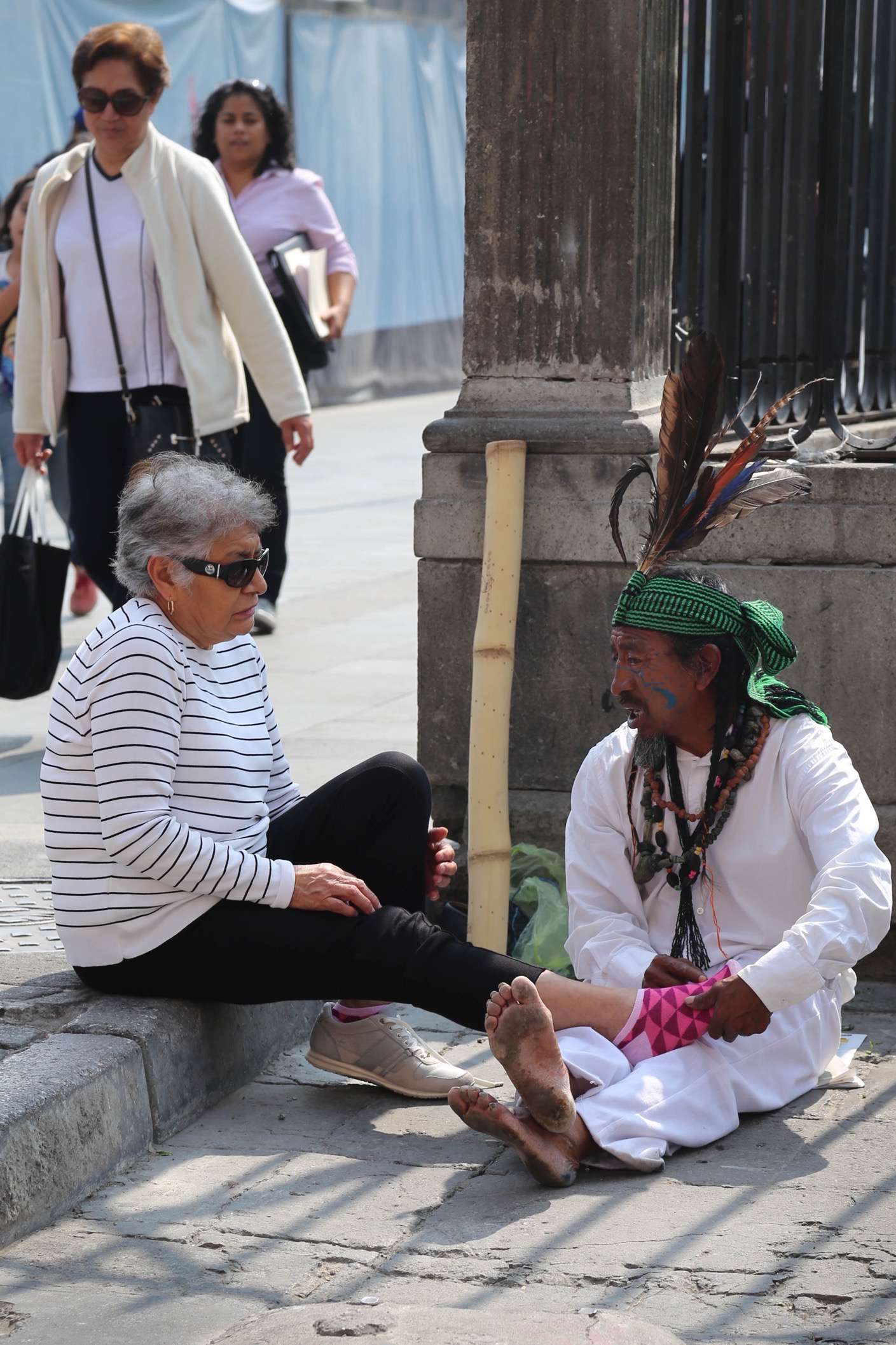
“Tell me where it hurts,” the street ‘doctor’ might be saying as his ‘patient’ winces during a ‘treatment’ just off the Grand Zocalo.
The city’s size, history, and her people let visitors concentrate on any number of aspects of both the city and Mexico’s heritage. Aztecs made Mexico City their home with the fulfillment of a prophecy; an eagle was spotted sitting atop a cactus while it devoured a snake. The Aztecs built a temple at that spot and the iconic symbol is enshrined in the nation’s flag. Tourists, both locals as well as international visit Templo Mayor, and has been undergoing renovation, just off the Grand Zocalo in the heart of downtown.

The National Cathedral at the Grand Zocalo is evidence of the Catholic church’s stature in Mexico.

A group of the devout in quiet reflection during a noon mass at the National Cathedral.
One could easily spend a couple of days at the Zocalo, because the Palacio Nacional is there and so is the Catederal Metropolitana, the oldest and largest Roman Catholic cathedral in Mexico.

Bellas Artes is a building of stunning design, both inside and out, and is located at the edge El Centro.

Outside Bellas Artes is a blend of Newclassical and Art Nouveau, but the inside is all Art Deco, giving the venue an odd, but pleasing mix of styles.

Mexico is famed for murals and Bellas Artes is an excellent spot to see works by artists such as Rivera, Siqueiros and Orozco.

Visitors to Bellas Artes listen as the meaning of a mural is explained.
Another spot to visit is Palacio de Bellas Artes, just a short Metro ride or a nice walk, is an amalgam of design but nonetheless visually stunning piece of architecture. The exterior is a blend of Neoclassical and Art Nouveau and the interior is primarily Art Deco. The venue provides performance space for the arts such as Mexico’s famous Ballet Folklorico and the space contains works of art by famed Mexican artists Diego Rivera, David Siqueiros, Jose Orozco, and others.

A great deal of ‘story’ can be found in the murals at Bellas Artes, and one of Diego Rivera’s most famous.
If art is more to your liking then a must-do is a visit to Frieda Kahlo’s home, Casa Azul. She grew up there with her parents and later lived in the home with her husband, renowned artist Diego Rivera. There you can see many of her works, gain an understanding of her life and appreciate the difficulties – both physical as well as emotional – she endured. And Museo Soumaya, founded by business titan Carlos Slim, and named after his late wife, has more than 60,000 works of art spanning 30 centuries, a strong collection of Mexican art, both old and new, and also the world’s largest collection of works by Auguste Rodin (outside of France).
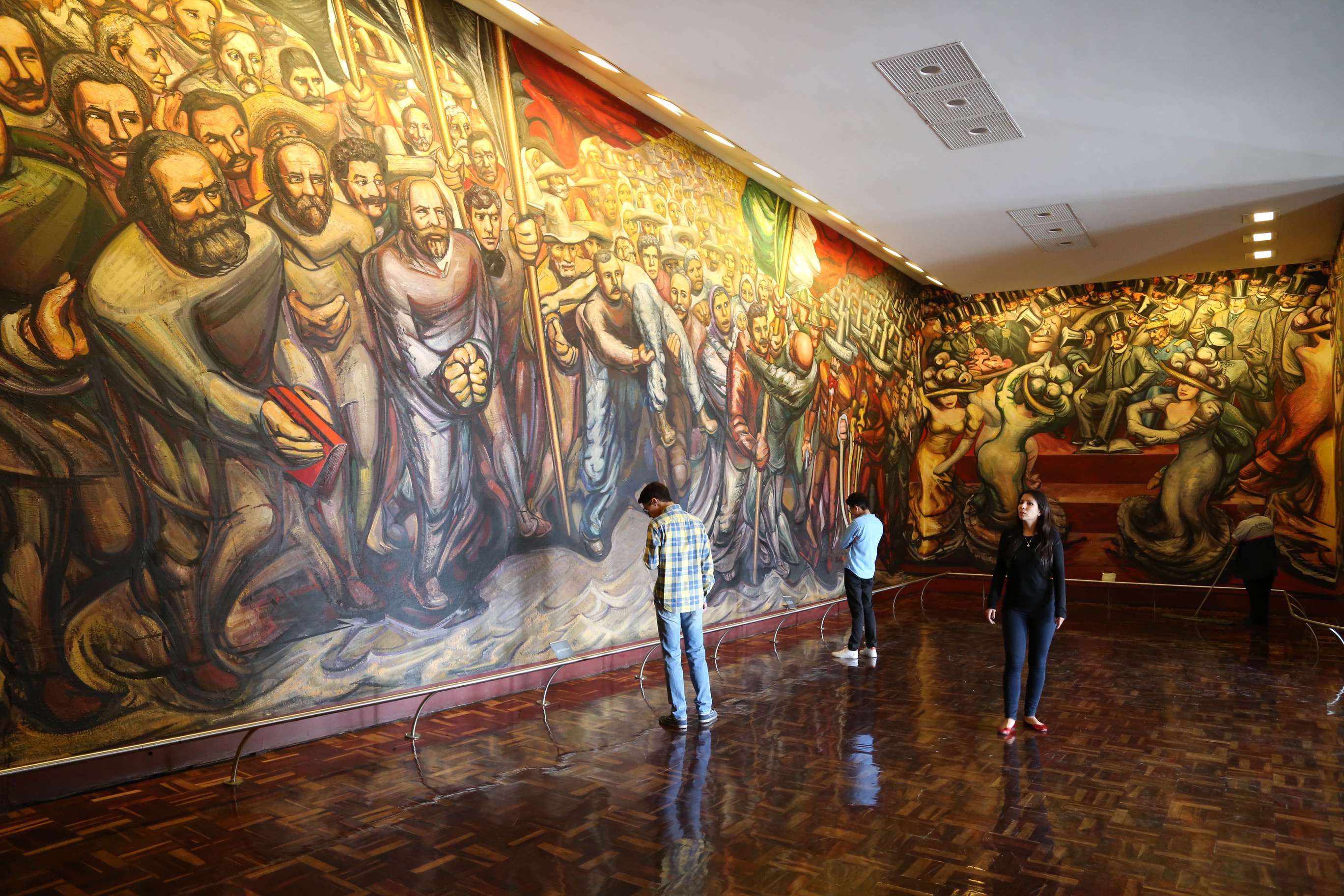
This giant mural by David Siqueiros, at Chapultepec Castle, tells a story of triumph overcoming struggle.
Like any major world city, food is an important component in Mexico City. Creative and respected chefs continue to open exciting restaurants and innovative venues like Mercado Roma, in Roma Norte, where a number of the city’s restaurants have set up small eateries where the city’s growing middle class like to gather, sample delicious foods and enjoy each other’s company.
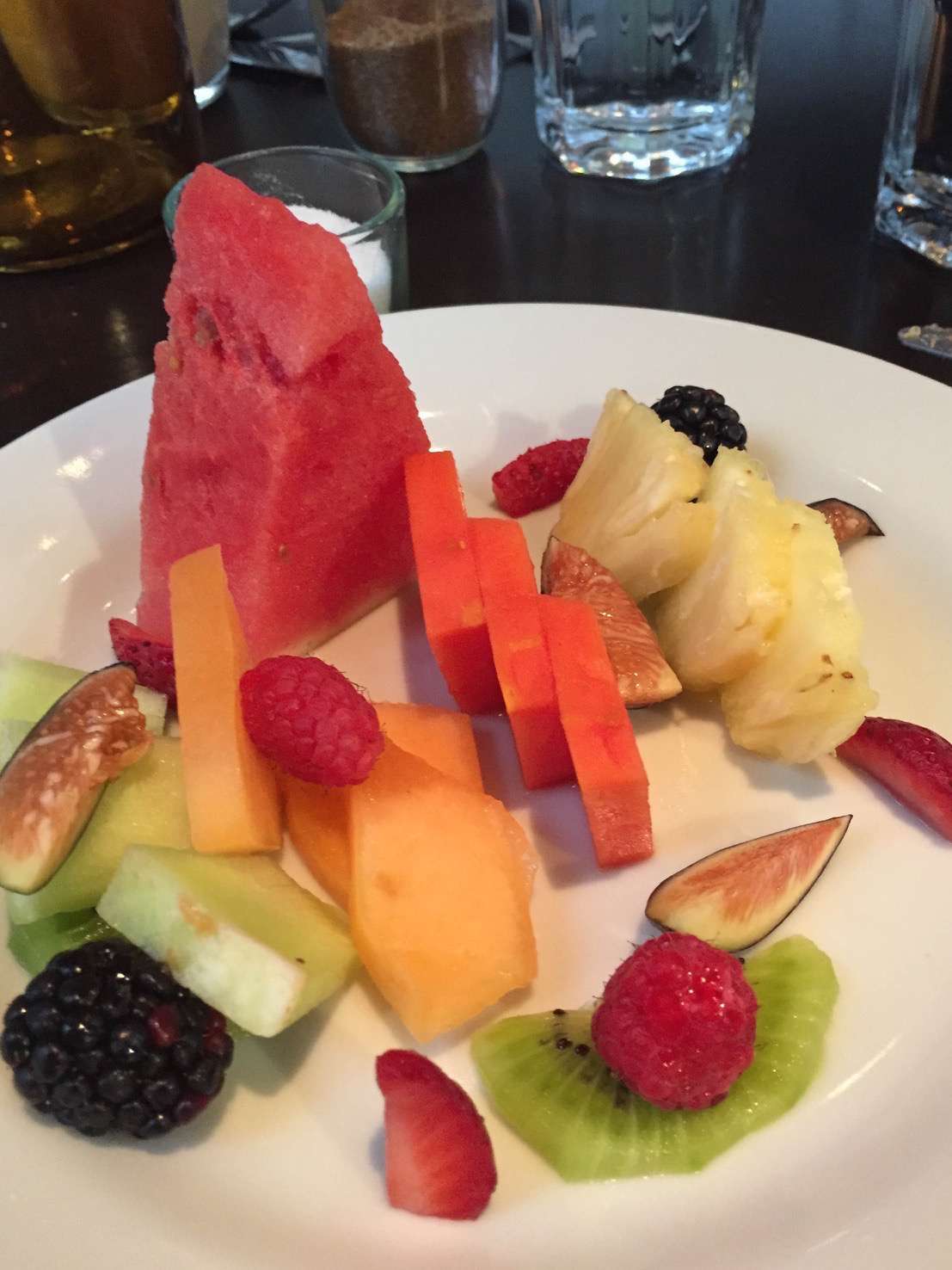
An abundant variety of fresh fruits is giving chefs in Mexico City new and creative options.
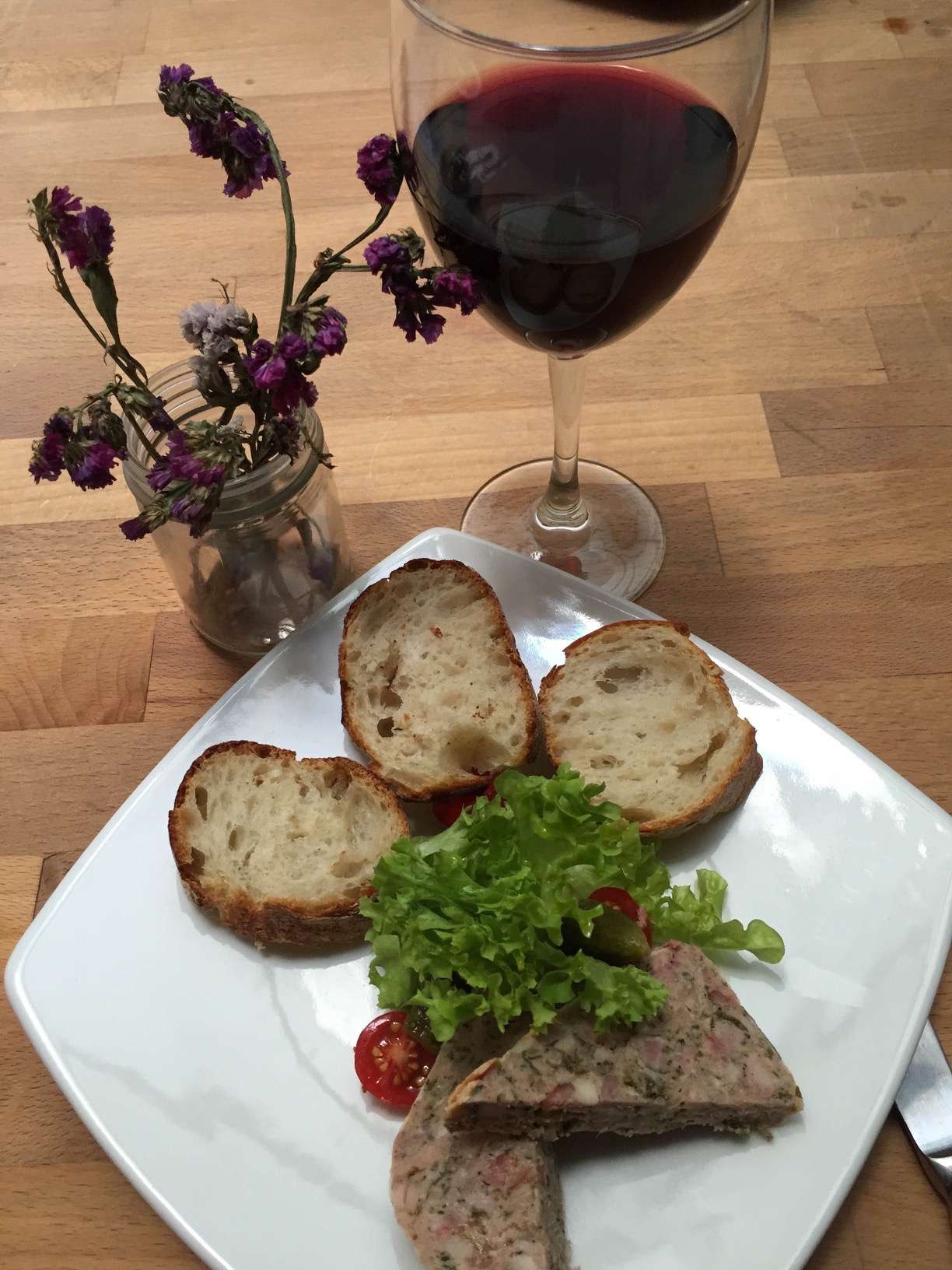
The bread and pate were delicious and made at the small cafe in Colonia Roma as part of a food tour.

Mexico City is a meat-lover’s paradise as this menu from Mercado San Juan, a stop along a food walking tour, attests.

It may be an inland city, but there is plenty of great, fresh seafood to be found in Mexico City.

Don’t knock it until you’ve tried some of the delicious insects. They generally have a nutty flavor.

More known for tequila, mezcal and mass-market beer, Mexico and Mexico City are home to some increasingly-appreciated craft beers, like this sampling during a walking tour of Barrio Roma.

In a shop in Colonia Roma, the artisan pours water, at the perfect temperature, in what may well be the best cup of coffee you will ever taste, as the tour guide explains the artist’s passion.
Of course the history of Mexico is amply told throughout the city, from the Museum of Anthropology (Sundays are free to residents, so brace for crowds), Castillo de Chapultepec, once home of notorious king and his wife, Maximillan and Carlotta (later a military academy and now home to the Museum of National History). Nestled atop a hill in Parque Chapultepec, an immense oasis in the middle of the city, it is also a sacred place to the Aztecs. The castle is a reminder of the ambitions of a young emerging nation and a symbol of pride in today’s dynamic society.
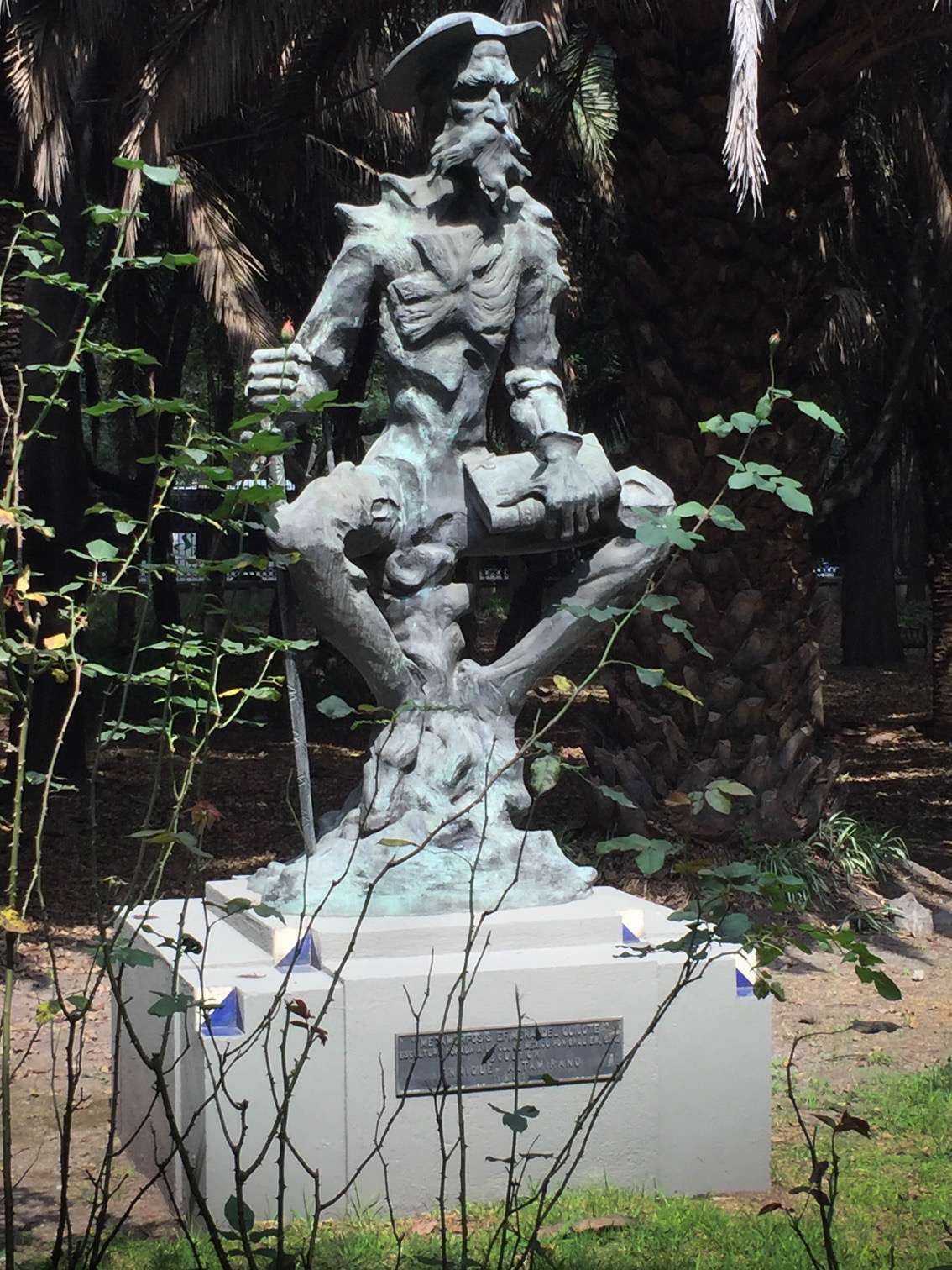
The Spanish writer Cervantes created Don Quixote, but he is popular with many Mexicans, explained a man visiting the statue in Chapultepec Park.
Mexico City has long shed its image as a sleepy, out-of-the-way tourist spot. Today is a concentration of people, energy and ideas. Getting around can be easy for the adventurous but also risky for the unaware. The Metro is a great and inexpensive way to cover lots of ground in a short time (electronic fare cards can be preloaded so you don’t have to handle money in public). But rush hour and peak travel times are a crush of people. Taxis are easy to find, but beware, as too many drivers will take advantage of unsuspecting tourists, so make sure the meter is turned on before the driver pulls away from the curb. (Also, have plenty of small bills when paying taxis to reduce the risk of receiving counterfeit money as change.) The ride sharing service Uber is a great alternative and cars are plentiful.

Dinner for 12 was not unusual at a gathering for the rich and powerful at Chapultepec Castle.

Staircase, Chapultepec Castle.
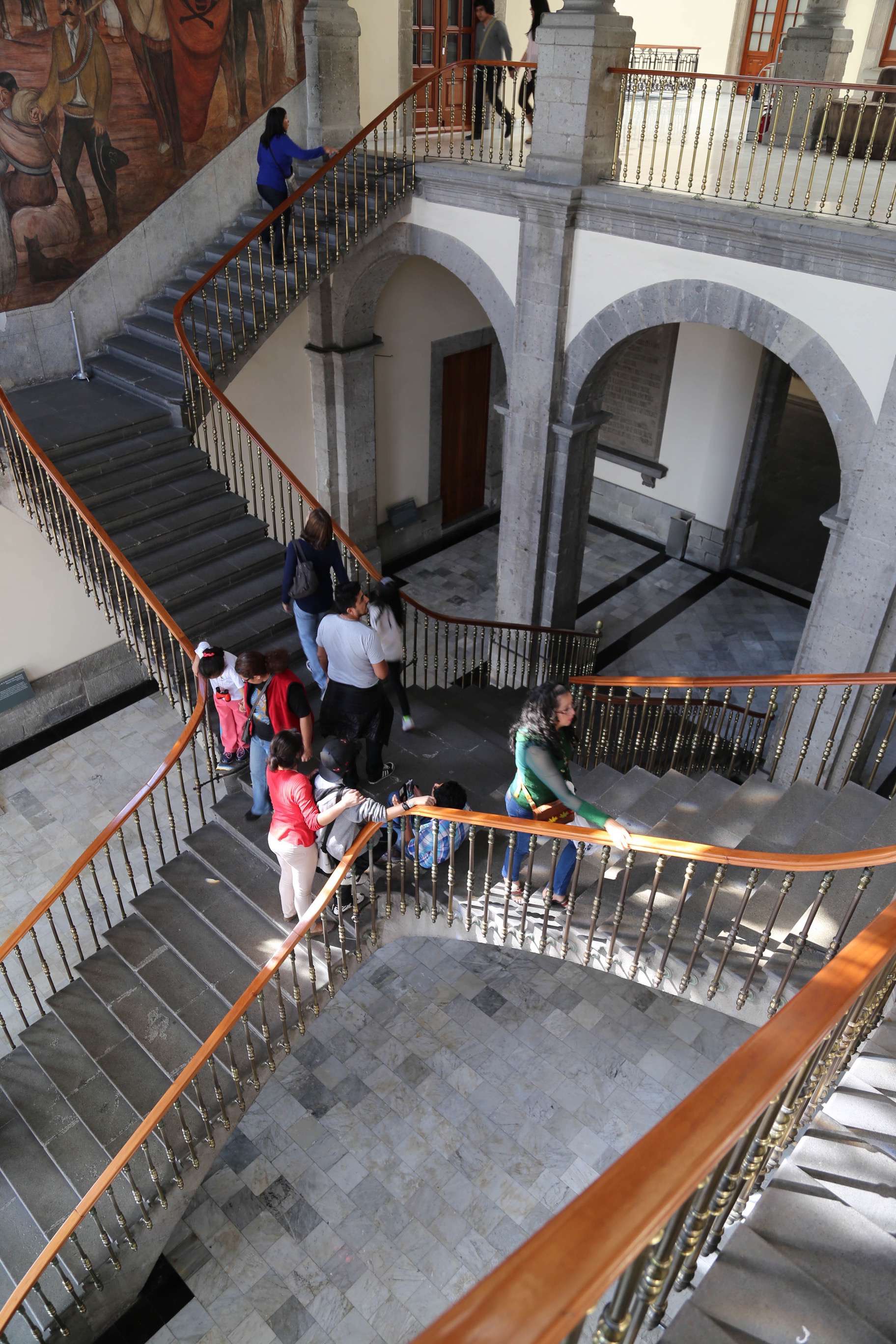
Flights of stairs wend their way together at Chapultepec Castle.
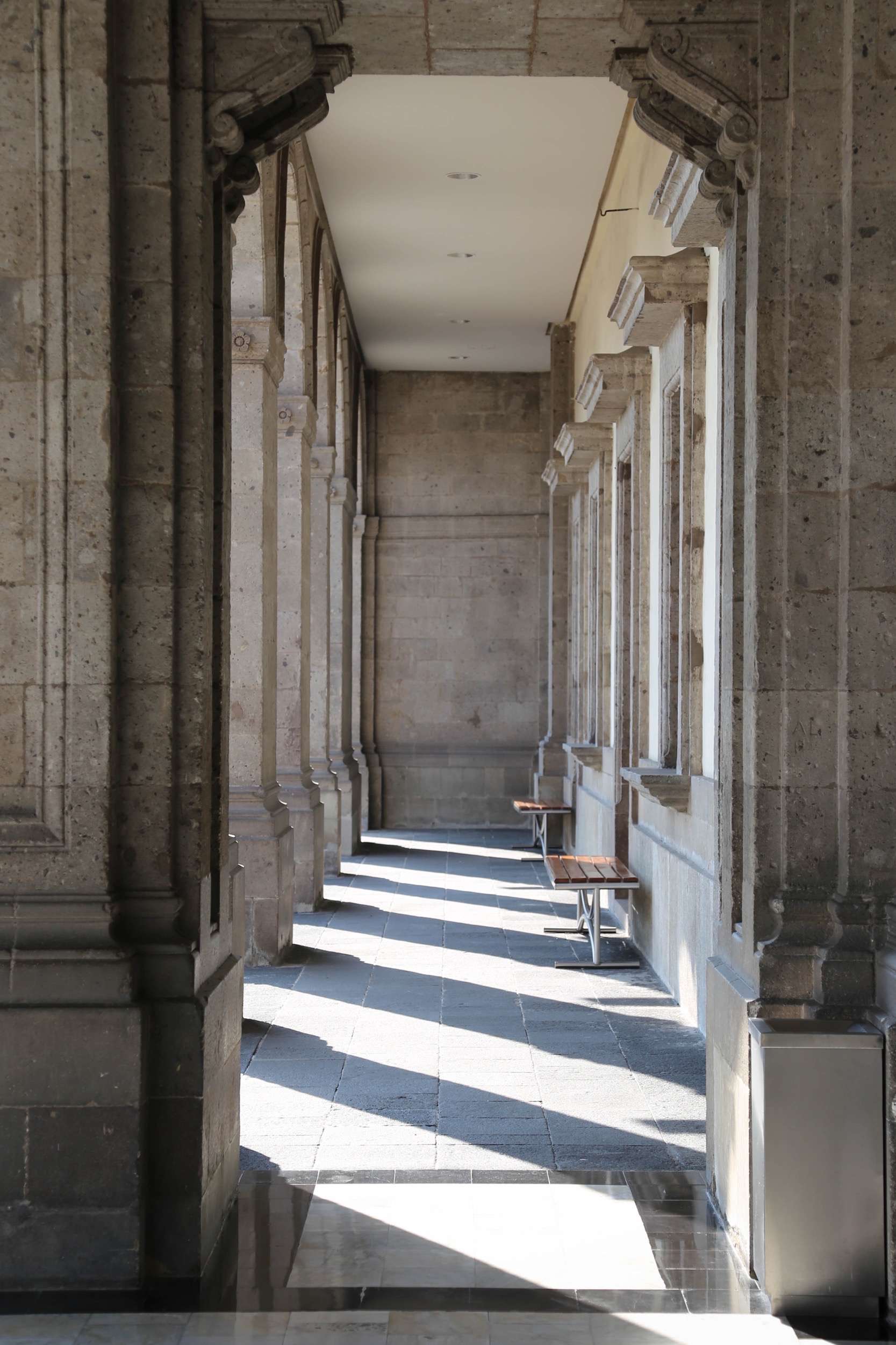
Columns and light, Chapultepec Castle.
Mexico City is one of the best places to gain a new perspective of a country that is well known but little understood and is rapidly transforming itself into a new example of a dynamic country in the Latin America family of nations.

Chapultepec Castle was also home to an early observatory, left, on the upper level of the complex.
For more information, visit these websites:
en.wikipedia.org/wiki/Mexico_City
en.wikipedia.org/wiki/Museo_Soumaya
fodors.com/world/mexico-and-central-america/mexico/mexico-city
